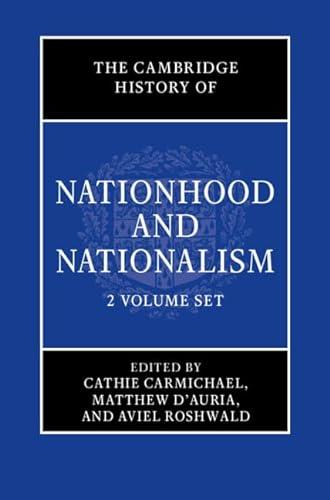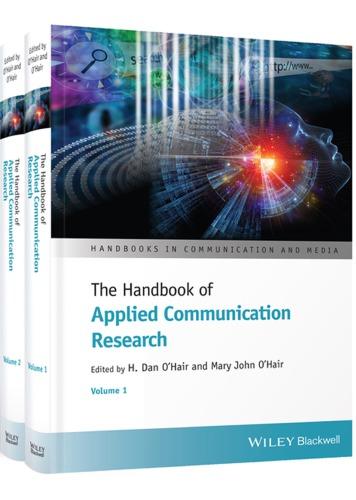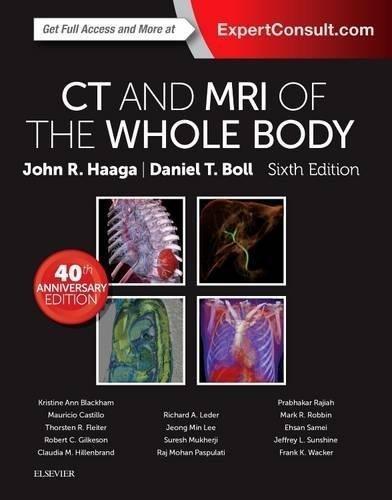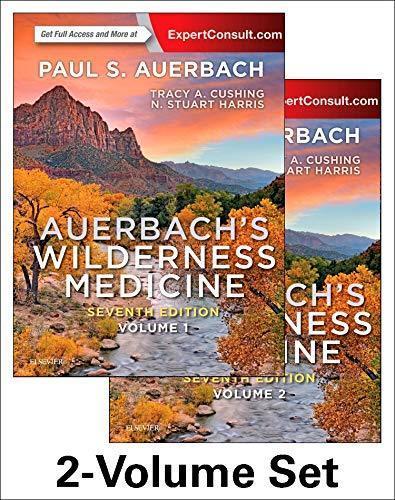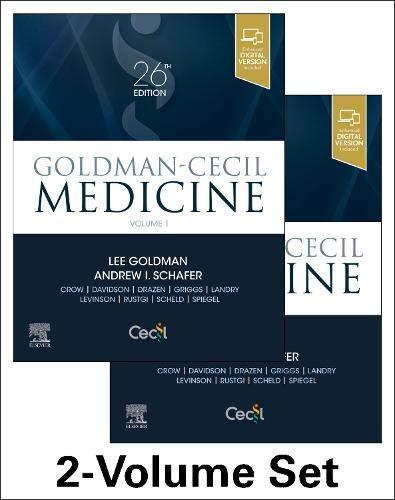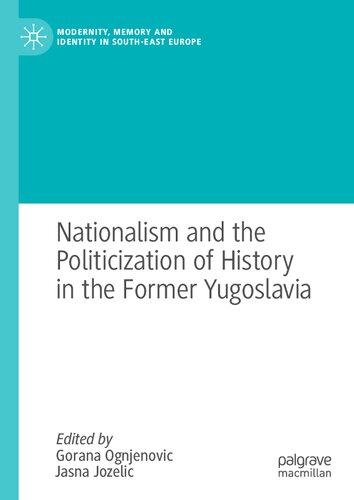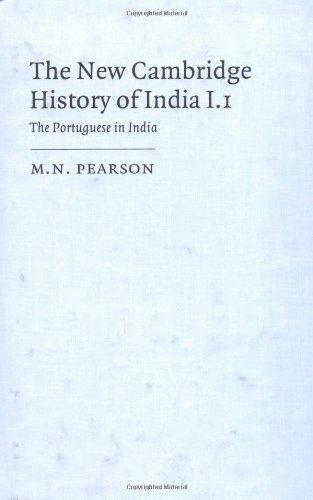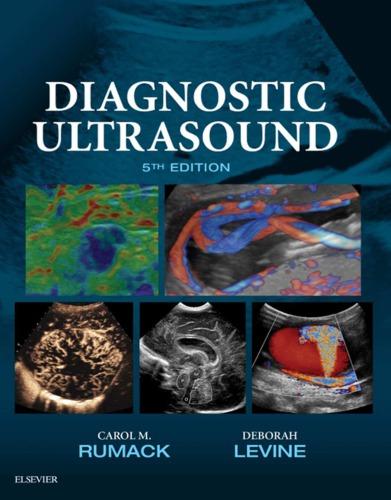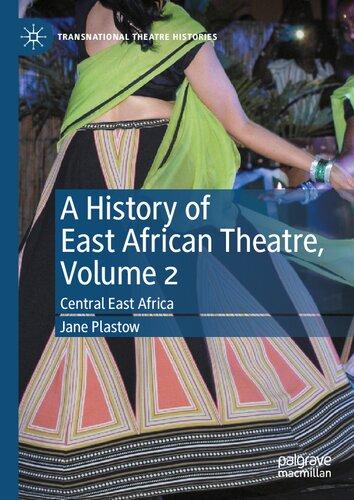Carmichael Visit to download the full and correct content document: https://ebookmass.com/product/the-cambridge-history-of-nationhood-and-nationalism -2-volume-hardback-set-carmichael/
More products digital (pdf, epub, mobi) instant download maybe you interests ...
The Handbook of Applied Communication Research, 2 Volume Set O'Hair
https://ebookmass.com/product/the-handbook-of-appliedcommunication-research-2-volume-set-ohair/
CT and MRI of the Whole Body, 2-Volume Set 6th Edition
https://ebookmass.com/product/ct-and-mri-of-the-wholebody-2-volume-set-6th-edition/
Auerbachu2019s Wilderness Medicine, 2-Volume Set 7th Edition
https://ebookmass.com/product/auerbachs-wildernessmedicine-2-volume-set-7th-edition/
Goldman-Cecil Medicine, 2-Volume Set (Cecil Textbook of Medicine) 26th
https://ebookmass.com/product/goldman-cecil-medicine-2-volumeset-cecil-textbook-of-medicine-26th/
Nationalism and the Politicization of History in the Former Yugoslavia Gorana Ognjenovic
https://ebookmass.com/product/nationalism-and-the-politicizationof-history-in-the-former-yugoslavia-gorana-ognjenovic/
The New Cambridge History of India, Volume 1, Part 1: The Portuguese in India M. N. Pearson
https://ebookmass.com/product/the-new-cambridge-history-of-indiavolume-1-part-1-the-portuguese-in-india-m-n-pearson/
Advanced Fermentation and Byong H. Lee
Cell
Technology, 2 Volume Set https://ebookmass.com/product/advanced-fermentation-and-celltechnology-2-volume-set-byong-h-lee/
Diagnostic Ultrasound, 2-Volume Set 5th edition Edition
Le■in
https://ebookmass.com/product/diagnostic-ultrasound-2-volumeset-5th-edition-edition-le%e1%b9%bfin/
A History of East African Theatre, Volume 2 Palgrave
https://ebookmass.com/product/a-history-of-east-african-theatrevolume-2-palgrave/
thecambridgehistoryof
NATIONHOODANDNATIONALISM Thismajornewreferenceworkwithcontributionsfroman internationalteamofscholarsprovidesacomprehensive accountofideasandpracticesofnationhoodandnationalism fromantiquitytothepresent.Itconsidersbothcontinuitiesand discontinuities,engagingcriticallyandanalyticallywiththe scholarlyliteratureinthe field.Volume I startswithaseriesof casestudiesofclassicalcivilizations.Itthenexploresawiderange ofpivotalmomentsandturningpointsinthehistoryofidentity politicsduringtheageofglobalization,from 1500 throughtothe twentiethcentury.Thisoverviewistrulyglobal,covering countriesinEastandSouthAsiaaswellasEuropeandthe Americas.
C ATHIE C ARMICHAEL isProfessorofEuropeanHistoryatthe UniversityofEastAnglia.Shehasauthoredandeditedseveral previousbooksincluding LanguageandNationalisminEurope,coeditedwiththelateStephenBarbour(2000)and Genocidebeforethe Holocaust (2009).
M ATTHEW D’A URIA isAssociateProfessorofModernEuropean HistoryattheUniversityofEastAnglia.Heistheauthorof The ShapingofFrenchNationalIdentity:NarratingtheNation’sPast, 1715–1830 (2020).
A VIEL R OSHWALD isProfessorofHistoryatGeorgetown University,Washington,DC.Hispublicationsinclude Ethnic NationalismandtheFallofEmpires:CentralEurope,Russiaandthe MiddleEast, 1914–1923 (2001)and TheEnduranceofNationalism:Ancient RootsandModernDilemmas (2006).
thecambridgehistoryof
NATIONHOODANDNATIONALISM Editedby cathiecarmichael,matthewd’auria,andavielroshwald
Theoriginsandnatureofnationhoodandnationalismcontinue tobetopicsofheatedscholarlydebate.Thismajornewreference workwithcontributionsfromaninternationalteamofscholars providesacomprehensiveaccountofideasandpracticesof nationhoodandnationalismfromantiquitytothepresent.It considersbothcontinuitiesanddiscontinuities,engaging criticallyandanalyticallywiththescholarlyliteratureinthe field.The History alsoexploresnationhoodandnationalism’ s relationshipswithawidevarietyofculturalpracticesandsocial institutions,inadditiontothephenomenon’scrucialpolitical dimensions.Itswiderangeofregionalcasestudiesbringsatruly global,comparativeperspectivetoa fieldlongconstrainedby Eurocentricassumptions.Volume I tracksturningpointsinthe historyofnationhoodandnationalismfromancienttimestothe twentiethcentury.Volume II theorizestheconnectionsbetween nationhood/nationalismandideology,religion,andculture. Together,theyenablereaderstounderstandtherootsofand hownationhoodandnationalismfunctioninthepresentday.
TheCambridgeHistoryofNationhoodandNationalism,Volume I
EDITEDBYCATHIECARMICHAEL, MATTHEWD ’ AURIA, ANDAVIELROSHWALD
TheCambridgeHistoryofNationhoodandNationalism,Volume II
EDITEDBYCATHIECARMICHAEL, MATTHEWD ’ AURIA, ANDAVIELROSHWALD
THECAMBRIDGE HISTORYOF NATIONHOODANDNATIONALISM LongueDurée *
Editedby CATHIECARMICHAEL
UniversityofEastAnglia
MATTHEWD ’ AURIA
UniversityofEastAnglia and AVIELROSHWALD
GeorgetownUniversity,WashingtonDC
UniversityPrintingHouse,Cambridge CB 28 BS,UnitedKingdom
OneLibertyPlaza, 20 thFloor,NewYork, NY 10006 ,USA
477 WilliamstownRoad,PortMelbourne, VIC 3207 ,Australia
314 – 321 , 3rdFloor,Plot 3 ,SplendorForum,JasolaDistrictCentre, NewDelhi – 110025 ,India
79 AnsonRoad,# 06 – 04 / 06 ,Singapore 079906
CambridgeUniversityPressispart oftheUniversityofCambridge. ItfurtherstheUniversity’smissionbydisseminatingknowledgeinthepursuitof education,learning,andresearchatthehighestinternationallevelsofexcellence.
www.cambridge.org
Informationonthistitle: www.cambridge.org/ 9781108427050
DOI: 10 1017 / 9781108655385
©CambridgeUniversityPress 2023
Thispublicationisincopyright.Subjecttostatutoryexception andtotheprovisionsofrelevantcollectivelicensingagreements, noreproductionofanypartmaytakeplacewithoutthewritten permissionofCambridgeUniversityPress.
Firstpublished 2023
PrintedintheUnitedKingdombyCPIGroupLtd,CroydonCR04 YY AcataloguerecordforthispublicationisavailablefromtheBritishLibrary.
LibraryofCongressCataloging-in-PublicationData
N AMES:Carmichael,Cathie,editor.|D’Auria,Matthew,editor.|Roshwald, Aviel,editor.
T ITLE:TheCambridgehistoryofnationhoodandnationalism/editedbyCathieCarmichael, MatthewD’Auria,andAvielRoshwald.
D ESCRIPTION:Cambridge,UnitedKingdom;NewYork:CambridgeUniversityPress, 2022.| Includesbibliographicalreferencesandindex.|
C ONTENTS:v. 1.Patternsandtrajectoriesoverthelonguedurée – v. 2.Nationalism’ s fieldsof interaction.
I DENTIFIERS: LCCN 2021050117 (print)| LCCN 2021050118 (ebook)| ISBN 9781108427050 (v. 1 ; hardback)| ISBN 9781108447201 (v. 1 ;paperback)| ISBN 9781108427067 (v. 2 ;hardback)| ISBN 9781108781237 (set;hardback)| ISBN 9781108655385 (ebook)
S UBJECTS: LCSH:Nation-state – History.|Nationalism – History.
C LASSIFICATION: LCCJC311 .C 292022 (print)| LCCJC 311 (ebook)| DDC 321/.05–dc23/eng/ 20211122
LCrecordavailableat https://lccn.loc.gov/2021050117
LCebookrecordavailableat https://lccn.loc.gov/2021050118
ISBN – 2 VolumeSet 978 – 1 – 108 – 78123 – 7 Hardback
ISBN – VolumeI 978 – 1 – 108 – 42705 – 0 Hardback
ISBN – VolumeII 978 – 1 – 108 – 42706 – 7 Hardback
CambridgeUniversityPresshasnoresponsibilityforthepersistenceoraccuracyof URLsforexternalorthird-partyinternetwebsitesreferredtointhispublication anddoesnotguaranteethatanycontentonsuchwebsitesis,orwillremain, accurateorappropriate.
1 . NationalityandEthnicityintheAncientNearEast 11
2 . Nationhood:WasThereSuchaThinginAntiquity? 31
. TheHolyRomanEmpire 54
5 . PoliticizedEthnicityinPrecolonialSoutheastAsia 96
. “India” beforetheRaj:SpaceandIdentityinSouthAsianHistory 115
. ColonialExpansionandtheMakingofNations:TheSpanishCase 145
. TheReformationandNationalIdentity 163
. Europe’sEighteenthCenturyandtheQuestfortheNation’sOrigins 186
. TheRiseoftheCharismaticNation: RomanticandRisorgimentoNationalism,Europe, 1800–1914 231
. RevolutionandIndependenceinSpanishAmerica 256
. ATaleofTwoCities:TheAmericanCivilWar 281
. ColonialSubjectsandtheStruggleforSelf-Determination, 1880–1918
19 . DecolonizationandtheColdWar 421 LESLIEJAMES
20 . 1968:TheDeathofNationalism? 442 ANNAVONDERGOLTZ
ConclusiontoPart II 463 Index 469
3.1 TheHolyRomanEmpireinthetimeofCharlesIV(FromLenScales, TheShapingofGermanIdentity (Cambridge:CambridgeUniversity Press, 2012).) page 57
C 1 Page 1 ofthethirdFreisingFragment.©Digitalfacsimiles:Bayerische StaatsBibliothek,Munich(https://creativecommons.org/licenses/ by-nd/2 5/si/deed.en).
11 1 HermanWiscilenus, ApotheosisofWilhelmIasRestorerofImperialGermany (SPINimagebank,Amsterdam(ernie.uva.nl/viewer.p/21/52).)
134
238
13.1 RuinsinCharleston,SouthCarolinaseenfromtheCircularChurch (LibraryofCongressPrintsandPhotographsDivision,Washington,DC.) 286
15 1 RabindranathTagore(PhotobyHuttonArchive/StringerviaGettyImages). 337
17 1 Celebratingtheoutcomeofthe 1962 referendumonAlgerianindependence inAlgiers.(DominiqueBERRETTY/Gamma-RaphoviaGettyImages.)
17 2 StreetscenewithAlgerian flags,Algiers,July 1962 (PhotobyReporters Associés/Gamma-RaphoviaGettyImages).
390
392
Contributors A NANYA C HAKRAVARTI isAssociateProfessorofHistoryatGeorgetownUniversity.Her firstbook, TheEmpireofApostles:Religion, Accommodatio andtheImaginationofEmpirein EarlyModernBrazilandIndia (2018),wasawardedanhonorablementionforthe AssociationforAsianStudies’ 2020 BernardS.CohnBookPrize.
M ICHAEL W.C HARNEY isProfessorattheCentreforInternationalStudiesand Diplomacy,SchoolofPoliticsandInternationalStudies,atSOAS,Universityof London,aswellastheDepartmentofHistory.Hispublicationsincludefour monographsonthehistoryofMyanmar.
P AMELA K YLE C ROSSLEY isCollisProfessorofHistoryatDartmouthCollege.Hermost recentbookis HammerandAnvil:NomadRulersattheForgeoftheModernWorld (2019).
M ATTHEW D’A URIA isAssociateProfessorofModernEuropeanHistoryatthe UniversityofEastAnglia.Heistheauthorof TheShapingofFrenchNationalIdentity: NarratingtheNation’sPast, 1715–1830 (2020).
M ALICK W.G HACHEM isAssociateProfessorofHistoryatMIT.Hispublications include TheOldRegimeandtheHaitianRevolution (2012),whichwontwoawards, includingtheAmericanHistoricalAssociation’ sJ.RussellMajorPrizeforthebest workinEnglishonFrenchhistory.
M ICHAEL G OEBEL isEinsteinProfessorofGlobalHistoryatFreieUniversitätBerlin.His 2015 book Anti-ImperialMetropolis wontheAmericanHistoricalAssociation’ s 2016 Jerry BentleyPrizeinWorldHistory.
S USAN -M ARY G RANT isProfessorofAmericanHistoryatNewcastleUniversity.Her mostrecentbooksincludethe AConciseHistoryoftheUnitedStatesof America (CambridgeUniversityPress, 2012)and OliverWendellHolmes:CivilWar Soldier,SupremeCourtJustice (2016).
S TEVEN G ROSBY isProfessorEmeritusofReligion,ClemsonUniversity.Hispublications include NationsandNationalisminWorldHistory (2022), HebraisminReligion,History,and Politics:TheThirdCulture (2021), Nationalism:AVeryShortIntroduction (2005)and Biblical IdeasofNationality:AncientandModern (2002).
E RICH S.G RUEN isGladysRehardWoodProfessorofHistoryandClassicsEmeritusatthe UniversityofCalifornia,Berkeley.Heistheauthororeditorofseventeenbooks,including EthnicityintheAncientWorld:DiditMatter? (2020)and RethinkingtheOtherinAntiquity (2011).
G ABRIELE H AUG -M ORITZ isProfessorofEarlyModernHistoryintheHistory DepartmentoftheKarl-Franzens-UniversityGraz.Sheiseditor-in-chiefofthe “ImperialDietRecords:ImperialAssemblies, 1556–1662. ”
T AMAR H ERZOG istheMonroeGutmanProfessorofLatinAmericanAffairsatHarvard.Her mostrecentbooksare AShortHistoryofEuropeanLaw:TheLastTwoandaHalfMillennia (2019)and FrontiersofPossession:SpainandPortugalinEuropeandtheAmericas (2015).
L ESLIE J AMES isSeniorLecturerinGlobalHistoryatQueenMaryUniversityofLondon. Sheistheauthorof GeorgePadmoreandDecolonizationfromBelow (2015)andco-editor of DecolonizationandtheColdWar (2015).
D ANE K ENNEDY istheElmerLouisKayserProfessorofHistoryandInternationalAffairs EmeritusatGeorgeWashingtonUniversityinWashington,DC.Heistheauthorof sevenbooks,including TheImperialHistoryWars:DebatingtheBritishEmpire (2018)and Decolonization:AVeryShortIntroduction (2016).
J OEP L EERSSEN isProfessorofModernEuropeanLiteratureattheUniversityof Amsterdam;healsoholdsaresearchprofessorshipatMaastrichtUniversity.Heisthe authorof NationalThoughtinEurope:ACulturalHistory (2007)andtheeditorof the EncyclopediaofRomanticNationalisminEurope (2018).
Y URI P INES isMichaelW.LipsonProfessorofAsianStudiesattheHebrewUniversityof Jerusalem.Hismonographsinclude,mostrecently, ZhouHistoryUnearthed:TheBamboo Manuscript Xinian andEarlyChineseHistoriography (2020)and TheBookofLordShang: ApologeticsofStatePowerinEarlyChina (2017).
J AIME E.R ODRI ´ GUEZ O. taughtasProfessorofLatinAmericanHistoryattheUniversity ofCalifornia,Irvine,from 1973 to 2008.Hismanybooksinclude “WeAreNowtheTrue Spaniards”:Sovereignty,Revolution,Independence,andtheEmergenceoftheFederalRepublicof Mexico, 1808–1824 (2012).
A VIEL R OSHWALD isProfessorofHistoryatGeorgetownUniversityinWashington,DC. Hislatestbook, Occupied:EuropeanandAsianResponsestoAxisConquest, 1937–1945,is forthcomingwithCambridgeUniversityPressin 2023
L EN S CALES isProfessorofHistoryatDurhamUniversity,wherehisteachingfocuseson medievalEurope.Heistheauthorof TheShapingofGermanIdentity:AuthorityandCrisis, 1245–1414 (2012).
J AN V ERMEIREN isAssociateProfessorinModernGermanHistoryattheUniversityof EastAnglia.Amonghisrecentpublicationsis TheFirstWorldWarandGermanNational Identity:TheDualAllianceatWar (2016).
A NNAVONDER G OLTZ isAssociateProfessorofHistoryatGeorgetownUniversity.Her publicationsinclude Hindenburg:Power,Myth,andtheRiseoftheNazis (2009)and The Other ‘68ers:StudentProtestandChristianDemocracyinWestGermany (2021).
GeneralIntroduction theeditors
Sincetheearly 1980s,thestudyofnationalismhasbeenrevivedasadistinct subjectofenquiryinitsownright.1 TheseminalworksofErnestGellner, BenedictAnderson,EricHobsbawm,andAnthonyD.Smith,publishedinthe 1980sand 1990sandnowclassics,havecontributedtoradicallychangingour readingofnationalism,offeringparadigmsforbothitsdeeperunderstanding andradicaldeconstruction.2 Crucially,thesescholarssetthemaintermsof adebatethatisstillongoingtoday.Themajordistinctionsamongthe advocatesofperennialism3 (fewerandfewer),theso-calledmodernists(still thepredominantschool),andAnthonySmith’sethno-symbolists(evergrowinginnumber),haveremainedlargelyintacttothisday,morethanthirty yearslater.Centraltothediscussionwastheissueofthenation’soriginsand whetherornotpremodernstructuresofcommunity,tradition,andidentity wereorwerenotimportantinshapingtheseemingly “modern” phenomenonofnationalism – whetherornot,touseGellner’shumorouslydismissiveexpressionthathasbecomecommoncurrencyinthe field,itmattersif
1 Earlierworksinclude:LordActon’ s 1862 essay, “Nationality,” inJohnEmerich EdwardDalberg-Acton, TheHistoryofFreedomandOtherEssays (London:Macmillan, 1919);ErnestRenan’ s 1882 lecture, “WhatisaNation?” trans.MartinThom,in GeoffEleyandRonaldGrigorSuny(eds.), BecomingNational:AReader (NewYork: OxfordUniversityPress, 1996);CarltonHayes, TheHistoricalEvolutionofModern Nationalism (NewYork:R.R.Smith, 1931);themanyworksbyHansKohn,suchas TheIdeaofNationalism:AStudyinitsOriginsandBackground (NewYork:Macmillan, 1948);KarlDeutsch, NationalismandSocialCommunication:AnInquiryintotheFoundations ofNationality (Cambridge,MA:TechnologyPressoftheMassachusettsInstituteof Technology, 1953).
2 SeeinparticularErnestGellner, NationsandNationalism (Oxford:Blackwell, 1983); AnthonyD.Smith, TheEthnicOriginsofNations (Oxford:Blackwell, 1986); BenedictAnderson, ImaginedCommunities (London:Verso, 1991);EricHobsbawm, NationsandNationalismsince 1780 (Cambridge:CambridgeUniversityPress, 1990).
3 TheworkofAdrianHastingsisoftenseenasbelongingwithinthiscategory;see,for example, TheConstructionofNationhood:Ethnicity,ReligionandNationalism (Cambridge; CambridgeUniversityPress, 1997).
“nationshavenavels.”4 Largely,thediscussionhingedontheproblemof whethernationswereinvented,orwere,rather,moreorganicsocialand historicalconstructions.Althoughthegenealogicaldimensionwasclearly pivotaltoit,thedebatewasatthetimedominatedbysociologists,political theorists,anthropologists,andphilosophers.Oneofthefewhistorianswho didplayanimportantrole,Hobsbawm,famouslydefinedthenationasan “inventedtradition,” thatis,asaseriesofpracticesofaritualorsymbolic charactermeanttoinculcatespecificviewsthatimpliedacontinuitywiththe past.Withinthenationalistdiscourse,heargued,historywasessentially a “legitimatorofactionandcementofgroupcohesion.”5 Nationalhistories wereartifactsofhistoricalfabricationbyhisreckoning.Itwasaviewthatwas insomerespectsilluminating,butcouldalso – andpartlydid – leadto apervasivedevaluationofthepremodernpastanditsstudyintheunderstandingofnationalism.
Overtheyears,historianshavebeeninfluenced(implicitlyorexplicitly)by theseparadigmsevenassocialscientistshave,inturn,drawnupontheirwork inthecourseoftheirongoingtheoreticalcontroversies.But,althoughthe theoreticaldebateamongmodernistsandtheircriticscontinues,ithasgrown somewhatstaleandrepetitious.Moreover,someofthepositionsinthat debatearethemselvespremisedonhistoricalassumptionsthatareincreasinglycontestedamonghistorians:e.g.thesharpnessofdivisionbetween premodernityandmodernity,thetriumphofsecularisminmodernhistory, avarietyofotherEurocentricassumptionsaboutthenatureandtrajectoryof modernity,theexclusivelyWesternoriginsofnationalism,etc.Hence,rather thansimplyrehashingandreengagingintheexistingtheoreticaldebate,what wehaveattemptedinthesevolumesistostepoutsideitsconfinesbydoing what,ashistorians,wethinkwecandobest:lookingempiricallyand comparativelyatthelinkedphenomenaof “politicizedethnicity,”6 national
4 ErnestGellner firstusedthisimageshortlybeforehisuntimelydeath,duringadebate withhisformerstudentAnthonyD.SmithatWarwickUniversityin 1995.Thatdebateis reproducedat www.lse.ac.uk/researchAndExpert ise/units/gellner/Warwick.html (accessed 13 September 2020).Theirpresentationswerepublishedinthe followingyearasAnthonyD.Smith, “OpeningStatement:NationsandtheirPasts,” NationsandNationalism, 2/3 (November 1996), 358–365;ErnestGellner, “Reply:Do NationshaveNavels?” NationsandNationalism, 2/3 (November 1996), 366–370
5 EricHobsbawm. “Introduction:InventingTraditions,” inEricHobsbawmand TerenceRanger(eds.), TheInventionofTradition (Cambridge:CambridgeUniversity Press, 1983), 12.
6 VictorLiebermanintroducedtheterm “politicizedethnicity” inhistwo-volumemagnumopus, StrangeParallels:SoutheastAsiainGlobalContext,c.800–1830, 2 vols.(NewYork: CambridgeUniversityPress, 2003–2009).AzarGatcoinedtheterm “politicalethnicity”
consciousness,andnationalismacrossarangeofcasesthatarenotlimitedto themoderneraandnotconfinedtotheWesternworld.
Itis,afterall,throughtheaccumulationofnewevidencethatdoesnot fit existingparadigmsthatparadigmshiftshappen.Ashistorians,wedon’tset outtoarticulateanewsocial-scientificmodel,butwedorefusetobe confinedbyexistingones.Whatourapproachdoesassumeistheformation andevolutionofnationhoodasacomplexsetofhistoricalprocessesstemmingfromasuperimpositionofseveralsuccessivelayersofsocialrepresentations,thelateronesreadaptingincomplex,unpredictable,andoften conflictingwaysthepreviousones.Althoughnationalismisnomorestatic thananyotherhistoricalphenomenon,itdrawsonandadaptssentimentsof kin-cultureaffinitythatappearquasi-universal.Ifwearetounderstandthe workingsanddistinguishingdynamicsofmodernnationalism – aboveall,its mechanismsofinclusionandexclusionandtherootsofitsemotional strength – wemuststudyhownationsaregraduallyconstructedandcontinuouslyreconstructedinwaysthatbothdrawuponandreshapepreexisting mentalities,sentiments,traditions,andpractices.
Inmanycollectionsonthehistoryofnationalism,theperspectiveadopted isclearlyand firmlythemodernistone.Theseeminglyindisputablestarting pointofthehistoryofnationalismistheFrenchRevolution,andthe emphasistendstobeplacedondiscontinuitieswithearlierfeelingsofcommunalityandsolidarity.Ouraim,bycontrast,hasbeentoconsidercontinuitiesasmuchasdiscontinuities,engagingcriticallyandanalyticallywith sweepingassertionsabouttheprimordialnatureofkinshipandethnotypes withoutdisdaining,apriori, longuedurée analysis;thisallinacknowledging thedistinctivefeaturesofmodernnationalism.Bythesametoken,weaimto explorenationalism’srelationshipswith,manifestationsin,andimpactsupon avarietyofculturalpracticesandsocialinstitutions – inadditiontothe phenomenon’scrucialpoliticaldimensions.Theaimistobroadenandenrich thedebate,notbyofferinganew,overarchingtheoryofthenationandof nationalism,butbyintroducingnewandmoreholisticperspectivestothe phenomenonbyapproachingthehistoryofnationalismthroughtheprisms ofother – intimatelyrelated – categoriesofconceptualandhistoricalanalysis. Indeed,oneofthecentralconcernsanimating TheCambridgeHistoryof
inAzarGatwithAlexanderYakobson, Nations:TheLongHistoryandDeepRootsofPolitical EthnicityandNationalism (Cambridge:CambridgeUniversityPress, 2013).Foraconcise versionofLieberman’sargumentabouthowethnicandpoliticalidentitiescouldoverlap inprecolonialSoutheastAsia,seeVictorB.Lieberman, “EthnicPoliticsin Eighteenth-CenturyBurma,” ModernAsianStudies, 12/3 (1978), 455–482
NationhoodandNationalism istheneedtobreakthe “internalistic” frameof referencethatstilllargelyinformsmanystudiesofnationalism.Itisamatter thatsociologistshavelongdebated,followingUlrichBeck’sfamousindictmentof “methodologicalnationalism”7:thetendencytoconsidersocietyas coincidentwith,andcoextensiveto,thenation.Itis,importantly,anassumptionthathasledmanyscholarstosearchforthecausesoftheworkingsof nationalismfromwithinthenationitself,thusignoringthecrucialimportanceofculturaltransfersandoverarchinggeopoliticalforces.Itisafaultthat muchhistoriographystillsuffersfromtoday.Evenwhenlookingatthe curriculaofuniversitiesworldwide,thestudyofthepastisstilllargely organizedaroundsinglenations.
Althoughanentirelytransnationalhistoryofnationalismmightbe,atbest, problematic – notleastbecauseofthehistoricalweightoftheprincipleof nationality,whichhassostronglytiedthenationtoboundedformsof politicalsovereignty – thereremainsapressingneedtoescapetheperspectivaltrapassociatedwiththeinternalistviewofnationalism.Thereareat leasttworeasonsforthis.First,because,asAnne-MarieThiessecogently arguedsometimeago,nationalismemergesalwaysinconfrontationwith othergroups.Ifwearetoacceptthat “thereisnothingmoreinternational thanthecreationofnationalidentities,” thenwemustrecognizethatinternalismcanleadtoseriousmisconceptionsandmisunderstandings.
8 Thesecondreasonisthatmethodologicalnationalismcausesknowledge, aspecificformofknowledge,tocontinuouslyreproduceitself – anditsfaults andmerits – ratherthantoevolveandchangeinresponsetonewresearch needs.Moreover,weseekpathsbeyond,notjusttheempiricalinternalismof thenation-by-nationcasestudy,buttheconceptualinternalismofstudying nationalisminisolationfromthemultipleotherframeworksofidentity, power,andbehaviorwithwhich,historically,itsdevelopmenthasbeenso intimatelyconnected.
Againstthepracticesofhistoriographicalandtheoreticalinternalism, manyofthechaptersinthesevolumesadoptacomparativeaswellas atransnationalapproachthatshedsnewlightonthehistoryofnationalism(s). Thus,ratherthanhavingaseriesofcasestudiesonindividualnations,we haveincludedchaptersthatlookatthehistoryofpeoplehoodacrossacrosssectionofsocietieswithinanygivenera.Insomesections,contributors
7 UlrichBeck, “TheCosmopolitanCondition:WhyMethodologicalNationalismFails,” Theory,CultureandSociety, 24/7–8(2007), 286–290.
8 Anne-MarieThiesse, Lacréationdesidentitésnationales:Europe,XVIIIe–XXe siècle (Paris: Seuil, 1999), 11
explorethehistoryofnationalisminthecontext,notofethnicgroupsand nation-states,butofreligionsandofempires(betheyterritoriallycontiguous politiesoroverseascolonialenterprises).The finalpartincludeschapterson theintertwinedrelationshipbetweennationalismandavarietyofsociocultural,political,andinstitutionalpractices,rangingfromwarandviolenceto tourism.
Asecondaimof TheCambridgeHistoryofNationhoodandNationalism is aglobalengagementwiththehistoryofnationhoodsandnationalism.Itis atruismthatmodernnationalismacquiredmanyofitstraitswithinthe Europeansettingandthatithasthenbeenadoptedandreadaptedinother contextswhich,inturn,havedeeplyinfluenceditsshape(s).Yet,forallthe truthintruisms,theycanbecomeanalyticaltraps.Amidstallthetalk,in recentyears,ofglobalizingthestudyofhistory,muchofthehistorical(as wellastheoretical)studyofnationalismhasremainedoverwhelmingly Eurocentric;eitherithasfocusedexplicitlyandexclusivelyontheEuroAtlanticsphere,orithasassumedthatnationalidentitiesoutsidethatsphere canonlybeexplainedandunderstoodasbyproductsof,andresponsesto, Westernimperialism.Theattentiontothevariousandcomplexformsof culturalandideologicalhybridizationderivingfromcontactwithordominationbyEuropeannationalitiesandempireshas,ontheonehand,ledtothe assumptionthattherearenosignificantindigenousantecedentstonationalisminthenon-Europeanpartsoftheworld,aviewonlyrecentlycontested, and,ontheother,producedthebeliefthatthenationwasthesolepossible wayoforganizingpoliticalspacesandcommunitiesinthemodernage.
Weface,then,theparadoxthatnationalismiswidelyviewedasaWestern export,evenasithasbeencelebratedastheprimarymeansofresistanceto theWestinmanycases.Theefforttowrestlewiththisseemingcontradiction intermscontinuestoplayoutinthehistoriographyofnationalism,as reflectedintheideaofmultiplemodernities,theSubalternStudiesschool’ s indictmentofIndiannationalismasaformofinternalcolonialism,therecent effortsbysomehistoriansto findproto-nationalismsintheprecolonial historiesofSouthandEastAsia,etc.9 Bythesametoken,therelationship betweenthenationandtheworldisanevercontestedissuewithineachof theWesterngreatpowersthemselves(LittleEnglandersvs.Imperial
9 See,forinstance,AtsukoIchijo, NationalismandMultipleModernities:EuropeandBeyond (London:PalgraveMacmillan, 2013);ParthaChatterjee, TheNationanditsFragments: ColonialandPostcolonialHistories (Princeton:PrincetonUniversityPress, 1993); PrasenjitDuara, RescuingHistoryfromtheNation:QuestioningNarrativesofModern China (Chicago:ChicagoUniversityPress, 1995);Lieberman, StrangeParallels
Unionists,Americanisolationistsvs.liberalinternationalists,etc.).TheJanusfacednatureofthenationis,ofcourse,awell-knownissuetoscholarsofneoandpostcolonialism – andanironicconundrumformanyofthem.Butthe implicittheoreticalconcernthatshouldinterestus,here,istheneedtograsp, throughcomparison,differencesandsimilaritiesbetweenEuropeanand extra-Europeannation-buildingexperiencesinordertocomprehendnot onlyhowdifferenthistorieshaveinteractedandmerged,buthowthey mayhavebothparalleledoneanotherinprecolonialtimesandhowthey maydivergeinourownevermoreconnectedworld.Itisacrucialconcernin thiseraofglobalization,inwhichtheautonomyandsovereigntyofevery singlenationisconstantlychallenged,amidstthepersistenceofnationalism itself – aphenomenonthat,notwithstandingperiodicrumorsofitsimminent demise,isstillfarfromdefunct.
PlanofOrganization Thetwovolumesaredividedinto fivemajorparts,asfollows:
Volume I:PatternsandTrajectoriesoverthe LongueDurée
Part I:ThePoliticsofEthnicity,Nationhood,andBelongingin theSettingsofClassicalCivilizations
Thechaptersunderthisheadinginvestigateimagesofcommunityandpractices ofinclusionandexclusionintheancient worldanduptothesixteenthcentury. Takingintoaccountavarietyofgeographicalregionsthroughoutseveral centuries,theauthorsconsidercontinuitiesanddiscontinuitiesinfeelingsof solidarityandinteractionacrossdifferentcivilizationsandsocieties.These chapterstrytocreateaframeworkforanalyticalcomparisonandforthe dissectionofcontinuitiesanddiscontinuitiesacrossspaceandtime,without becomingstuckinthebinarytrapofarguingoverwhetheranygivencasedoes ordoesnotmeritthelabelof “nationalism.” Theaimistocreatethebasisfor moresubstantiveandinformeddiscussionsabouttheevolutionofculturaland politicalidentities,andtherelationshipbetweenuniversalisticandparticularistic conceptionsofcommunity,overthe longuedurée ofhistory.
Part II:ParadigmShiftsandTurningPoints intheEraofGlobalization, 1500 tothePresent
Thispartexaminestheevolutionofethnocultural,ethnopolitical,and/or nationalidentitiesfromthesixteenthcenturyonwards.Eachchapter
considersaglobalturningpointoraspecificerafromatransnationalperspective.Particularattentionisgiventocross-culturalpracticesinthedefinitionofothernessandtopatternsofconvergenceanddivergenceinthe evolutionofethnicandnationalidentitiesinanerawhennetworksof culturalandeconomicexchangeandpatternsofdomination,conquest, collaboration,andresistancewerebecomingsteadilymoreglobalinscope.
Volume II:Nationalism’sFieldsofInteraction
Part I:ImperialandPostcolonialSettings
Empiresarecommonlythoughtofas,insomesense,theoppositeofnations andnation-states.Infact,asrecentscholarshiphashighlighted,imperialelites bothfosteredandprovokedthecrystallizationofnationalidentitiesin avarietyofforms,evenastheystruggledtocontainvariousmanifestations ofpopularnationalism.Thispartonceagainstepsoutsidethebounded analyticalframeworkofthenation-state,lookingatthedevelopmentof nationalidentities,movements,andpolitiesfromtheperspectiveofimperial, colonial,andpostcolonialhistory.
Part II:TransnationalandReligiousMissionsandIdentities
Nationalismhasshaped,andbeenshapedby,avarietyofinternationalistand universalisticforcesandideologies,thestudyofwhichhasalltoooftenbeen siloedawayfromthatofnationalism.Itistheinteractionamongthese fields ofnational,transnational,civilizational,andcosmopolitanidentity,loyalty, andconflictthatconcernsusinthispart.
Part III:Intersections:National(ist)SynergiesandTensions withOtherSocial,Economic,Political,andCultural Categories,Identities,andPractices
Howdoesnationalismpermeateeverydaylife?Howdoesnationalisminteractwithandshapediverseactivities,behaviorpatterns,andculturalpractices inthemodernworld?Conversely,towhatextentdothesepracticesinturn influencetheever-evolvingformsandexpressionsofnationalidentity?Inthis part,weexaminesomeoftheprincipalwaysthatnationalidentityisexperienced,withparticularemphasisonitsintersectionwithothersocialand politicalidentitiesandpractices.Insodoing,wealsohopetobringthe historicalandthecontemporarytogetherbylookingattheeffectsofpolitics, theinternet,socialmedia,sport,andotherculturalpracticesonhistorically evolvingnationalisms.
Asthisbookwasabouttogotopress,weweredeeplysaddenedtolearnof thepassingin 2022 ofoneoftheco-authorsofthiswork,ProfessorJaimeE. RodríguezO.Wearegratefulhewasabletocontributetothesevolumes withachapterwhichisadistillationofhisyearsofoutstandingscholarshipin his field.
THEPOLITICSOFETHNICITY, NATIONHOOD,AND BELONGINGINTHESETTINGS OFCLASSICALCIVILIZATIONS NationalityandEthnicityintheAncient NearEast stevengrosby
AscertainingwhetherornotnationsexistedintheancientNearEastis notmerelyforthesakeofdetermininghistoricallywhentheseterritorial relationsofsocialkinshipappear.1 Iftheevidence,howevercomplicated, suggeststheexistenceofnations intheancientNearEast,amore accurateunderstandingofnotonlyantiquitybutalso “moderntimes” shouldemerge,astheclassifi cationoftheselfandothersonthebasisof birthandresidenceinaterritorywouldnothaveoriginatedwiththe 1648 TreatyofWestphalia,andcertainlywouldnotbenoveltothesocalled “ AgeofNationalism” ofthenineteenthcentury.Thedistinction betweentheputativelyethnic,tradition-infusedlocalcommunity (Gemeinschaft )ofthedistantpastandthem odern,commercialsociety (Gesellschaft)oftoday,orvariationsofthatviewofsocialdevelopment suchasahistoricallyoriginalrelationofstatusbasedonbirthincontrast totheachievementoftheindividualthroughmoderncontractualrelations,willbeseentobetheoreticallyantiquatedandhistoricallysimplistic.Thatdistinctionwronglyimpliesthatinantiquitytherewereno territoriallyextensivestates,largemetropolises,extensivemarketsfor goodsandservices,andlong-distancetrade.2 Infact,kinship,arelation ofstatusbetweenindividualsthatisbasedonthesignifi canceattributed totraceabledescent,persistsi ntothepresent,notonlyobviously throughthefamilybutalso,andwithincreasingsalience,through
1 For “socialkinship,”“socialrelation,” andtheirrelationtoterritoryandnationality,see StevenGrosby, “Time,Kinship,andtheNation,” Genealogy, 2 (2018), 1–19; StevenGrosby, Nationalism:AVeryShortIntroduction (Oxford:OxfordUniversity Press, 2005), 27–42;StevenGrosby, “Territoriality:TheTranscendental,Primordial FeatureofModernSocieties,” NationsandNationalism, 1/2 (1995), 143–162
2 Forcriticalevaluationofthecontrastbetween Gemeinschaft and Gesellschaft,statusand contract,seeStevenGrosby, “NationalismandSocialTheory:TheDistinctionbetween CommunityandSociety,” inGerardDelantyandStephenTurner(eds.), Handbookof ContemporarySocialandPoliticalTheory (London:Routledge, 2011), 280–289
whattheanthropologistRobertLowielongagodescribedasthe “territorialtie. ” 3 Territorialrelationsbetweenindividuals,forexample, nationality,arealsoanthropologicalcategories.Theyareformsofkinship,astheyentailself-classifi cation,distinguishingoneindividualfrom anotherindividualandonegroupfromanothergroup,basedonthe signi fi canceattributedtotraceabledescent,albeitnotfromaparentbut withinaterritory.Finally,theinterpretationofthatevidenceshould involvesubjectingthecategoryof “ ethnicity” tore fi nedscrutiny,resultinginamorerestricteduseofitthanone fi ndstodayinhistorical scholarship.
Onlytheshamefulneglectbymanyuniversityhistorydepartmentsandthe majorityofscholarsofnationsandnationalismofthethree-millennia-long historyoftheancientNearEastmakesthisexaminationpressinglynecessary – ahistorythatincludestheemergenceofurbanism,writing,the alphabeticscript,clearlydemarcatedterritories,lawcollections,states,standingarmies,empires,long-distancetrade,andreligiousmonolatry,dualism, andmonotheism.Theproblemsposedbythisinvestigationofnationalityin thehistoryoftheancientNearEastcanbeformulatedasaseriesofquestions. Weretheredistinctionsbetween “peoples” throughoutthathistory?How shouldweunderstandthesepeoples?Werethereboundedterritoriesdistinct frommerelygeographicalareas?Didthoseterritoriesconveyameaningto theirinhabitants,specifically,wherereferencetoaterritoryhadabearingon theclassificationoftheself?Whilethroughoutthishistorythereweretribes, city-states,andempires,weretherealsonationsandnationalstates?Finally,if therewerenations,whatwastherelationbetweennationandempire?
KinshipandPeoples OurevidencethroughoutthehistoryoftheancientNearEastclearlyindicatesacontinualdifferentiationofpopulations.Infact,referencestoterms distinguishingonepeoplefromanotheraresocommonthatitisonlyaslight exaggerationtostatethatitisdifficultto findexamplesamongthetensof thousandsofinscriptionsdiscoveredthatdonotcontaintermsofselfclassificationdistinguishingonepeoplefromanother.Asearlyastheearly dynasticperiod(2900–2350 BCE),distinctionsweredrawnbetweenthe Sumeriancity-statesofUr,Uruk,Lagash,Umma,Nippur,andKish,the territoriesofallofwhich,whilerevolvingaroundanurbancenter,contained
3 RobertLowie, TheState (NewYork:HarcourtBrace, 1927), 51–73
withintheirbordersothertowns.Adramaticexampleofthesedistinctionsis thedescriptionoftheconflictbetweenLagashandUmma.4
Enlil,thekingofthelands,fatherofthegods,uponhis firmcommanddrew theborderbetweenNingirsu[godofLagash]andShara[godofUmma] ... Eannatum,rulerofLagash ... madetheborderbyextendingtheInun-canal toGu’edena[totheedgeoftheplain] Atthatboundary-channelhe inscribednewboundary-stones ... IfthemanofUmma,inordertocarry offthe fields[takesthe fieldsbyforce]crossestheboundary-channelof Ningirsu[Lagash] beheamanfromUmma[anUmmaean]or aforeigner,may[thegod]Enlildestroyhim!
Thereareseveralobservationstobemadefromeventhisoneexcerptofone inscription.NotonlyisthereanobviousdistinctiondrawnbetweenLagash andUmma,butalsooneindividualisdistinguishedfromanotherdepending uponwhatcityhewasfrom,so “manfromUmma,” oran “Ummaean,” in contrasttobothamanfromLagashandaforeigner.Thisdesignationof “man(orson)ofcity-statex”– characteristicoftheMesopotamiancity-states – indicatesthatterritoriallocationwasareferenceinself-classification.Of course,within,forexample,Umma,thepopulationofwhichisestimatedto havebeenapproximatelytwentythousand,5 theindividualwouldhavealso understoodhimselforherselfasamemberofafamily.Wethushave acomminglingoftwoformsofkinship:descentwithinaterritoryand descentwithinthefamily.
Thisterritorialkinshipofthosewhoarefrom,orof,thecity-stateis dependentuponthestabilityovertimeofanimageofitsterritory.The classificatorysalienceaffordedbythestabilityofthatimagewillbeachievedif therearerelativelyprecisebordersovertimeincontrasttoimprecisefrontiers, fluctuatingbothgeographicallyandtemporallyoftenasaresultofwar. WeseethatinthedescriptionoftheconflictbetweenLagashandUmma therewerecarefullydemarcatedborders,andspecificallymanmadeborders: theboundary-canal/channelandboundary-stones.Thereisagreatdealof evidencethroughoutthehistoryoftheancientNearEastofcarefullydemarcatedborders,onlyafewexamplesofwhicharetheboundarybetweenHatti andthelandimmediatelytoitswest,Tarhuntassa,6 theprovincesofthe
4 JerroldCooper, PresargonicInscriptions (NewHaven:AmericanOrientalSociety, 1986), 54–57
5 PiotrSteinkeller, “AnEstimateofthePopulationoftheCityofUmmainURIIITimes,” inYagmurHeffron,AdamStone,andMartinWorthington(eds.), AttheDawnofHistory: AncientNearEasternStudiesinHonourofJ.N.Postgate (WinonaLake:Eisenbrauns, 2017), 535–566
6 GaryBeckman, HittiteDiplomaticTexts (Atlanta:ScholarsPress, 1996), 104–105
AssyrianEmpireasdescribedintheAnnalsofTiglath-PileserIII,7 andtheland ofIsraelasdelineatedinNumbers 34:2–12. 8 Theideathatinantiquitythere wereonlygeographicallyimprecisefrontiers,dependentsolelyuponnatural barrierssuchasmountainranges,deserts,andrivers,isfactuallyincorrect. Moreover,asoneshouldexpect,thisterritorialkinshipofthecity-state finds expressioninlaw,specificallyinthelegal-anthropologicalcategoryofthe Akkadianterm awı ¯lum (Sumerian lú),thefreeadultindividual.
Thisterritorialkinship,conveyed,onceagain,bythedescriptiveclassificatoryidiom “son(s)ofcityx”– aclassificationseeminglydistinctfrom “son(s) ofatribe” (or “houseofaneponymousancestor”) – consistsoftheinhabitantsofthecity-state,who,asmembersof(or “sonsof”)thecity-state,claimed privilegesandrightsbasedupontheirterritorialdescentandresidence.9 Needlesstosay,notallwhodwelledwithintheterritoryofthecity-state hadthoseprivilegesandrights,asthelawsdistinguishedbetween,ontheone hand,the awı ¯lum,and,ontheother,theindenturedservant,slave,and foreigner,wherethe awı ¯lum,asafreeadultmemberofthestate,possessed authorityoverhimselfandhispropertywithinthestate.10 Itmayverywellbe thatthehistorianisjustifiedintranslating awı ¯lum as “citizen.” Puttingaside considerationofthemeritofthispossibilityanditshistoriographicalimplications,the awı ¯lum isnotmerelyalegalcategory.Itisalsoimplicitlyan anthropologicalcategoryasthereisaterritorialkinshipwithotherswho arerecognizedtobe awı ¯lum – akinshipconveyingjurisdictiontothelawful exerciseofthe awı ¯lum’spoweroverhimselfandhisproperty.Thisterritorial jurisdictionofthelegalcategoryofthefree,adultmaleisexplicitinthe biblical ’ezra¯h ˙ ha’ares ˙ , “nativeoftheland”– atermoflegalanthropology distinctfromboththealienwhoresidescontinuallyintheland(ge¯r)andthe foreigner(nokrî),andwhichappears,eitheras ’ezra¯h ha’ares ˙ orabbreviatedas
7 HayimTadmor, TheInscriptionsofTiglath-PileserIII (Jerusalem:IsraelAcademyof SciencesandHumanities, 1994).
8 Forotherexamples,seeStevenGrosby, “BordersandStates,” inDanielSnell(ed.), ACompaniontotheAncientNearEast (Malden,MA:Wiley-Blackwell, 2019); StevenGrosby, “Frontiers,AncientNearEast,” inRogerS.Bagnell,KaiBrodersen, CraigeB.Champion,AndrewErskine,andSabineR.Huebner(eds.), Encyclopediaof AncientHistory (Malden,MA:Blackwell, 2012), 2770–2771
9 AmélieKuhrt, TheAncientNearEast,c. 3000–330 BC (London:Routledge, 1995), 614;see alsoMarcVandeMieroop, “TheGovernmentofanAncientMesopotamianCity,” in KazukoWatanabe(ed.), PriestsandOfficialsintheAncientNearEast (Heidelberg: C.Winter, 1999), 139–161
10 EvaVonDassow, “FreedominAncientNearEasternSocieties,” inKarenRadnerand EleanorRobson(eds.), OxfordHandbookofCuneiformStudies (Oxford:OxfordUniversity Press, 2011), 205–228;seealsoDanielSnell, FlightandFreedomintheAncientNearEast (Leiden:Brill, 2001); TheAssyrianDictionary,vol. I (Chicago:OrientalInstitute, 1956–2011), A,part 2, amı ¯lu, 48–57
’ezra¯h ˙ , “native,” nineteentimesintheHebrewBible,forexample,in Leviticus 24:22, “youwillhaveone[civil]lawforthealienwhoresidesin yourland(ge¯r)andforthenativeborn(’ezra¯h ˙ =Israelite).”11 Thus,theoften assumedhistoricalcontrastbetweenanearlierpersonallawandalater territoriallawismuchtoofacile.Thelegalcontextforthedistinction between awı ¯lum andforeignerisoneof lexterrae,asitalsoisbetween ’ezra¯h ˙ and ge¯r;forthe ge¯r isdistinguishedfromthe nokrî bythe ge¯r’spermanent residencewithintheterritoryofIsrael.
Theseobservationsprovidethebasisforabriefdigressiontoaddress aviewoftenraisedbythosehistorianswhoarguethatlargersocieties occuronlyinmoderntimesbyinsistingthatinantiquity(andtheMiddle Ages)individualsdidnotandcouldnotrecognizethemselvestobemembers oflarger,territorialsocieties.Numerouscollectionsoflaws – Sumerian, Babylonian,Hittite,Assyrian,neo-Babylonian – beginningwiththelawsof Ur-Namma(c. 2100 BCE),positedrightsandprivilegesforthe awı ¯lum and judicialprocedures.12
Characteristicofwhatone findsintheselegalpronouncementsisthe followingexcerptfromoneofHammurabi’s(c. 1750 BCE )laws:13
Ifaman[awı ¯lum]whoclaimstohavelostproperty[and]thendiscovershis lostpropertyinanotherman’spossession produceswitnesseswhocan identifyhislostproperty – thejudgesshallexaminetheircases ... andthe witnesseswhocanidentifythelostpropertyshallstatethefactsknownto them theownerofthelostpropertyshalltakethelostproperty,andthe buyer[ofthelostproperty]shalltakefrom[legallyuntitled]seller’sestatethe amountofsilverthatheweighedanddelivered.
Theveryexistenceofthesepronouncements,irrespectiveofwhetherornot judicialdecisionswerealwaysmadeinaccordwiththem,thedescriptionof relativelyrationaljudicialprocedures(witnessesandexaminationoftestimony),thereferenceto “judges,” andtheattendantcontributionofthese pronouncementstotheorderingofasocietyoughttobeenoughtodismiss the “modernist” assumptionby,forexample,ErnestGellnerthatinantiquity therewereonlythe “lowcultures” ofisolatedcommunitiesheldtogether withinahighlystratified,agrariansocietybyculturallydistantelites.14 They indicate,incontrast,acivil,publicspheredistinctfromfamilialrelationsin
11 JacobMilgrom, Leviticus (NewHaven:Yale, 2000), 1416–1420, 1704, 2127
12 MarthaRoth, LawCollectionsfromMesopotamiaandAsiaMinor (Atlanta:Scholars, 1997); RaymondWestbrook(ed.), AHistoryofAncientNearEasternLaw (Leiden:Brill, 2003).
13 Roth, LawCollections, 82–83,¶ 9
14 ErnestGellner, NationsandNationalism (Ithaca:CornellUniversityPress, 1983).
antiquity.Anotherexampleofthisspherewasthestandardizationofweights andmeasures,alreadydescribedintheprologueofthelawsofUr-Namma, whichmadepossibleandmoreequitablethecommercialexchangeofthe market.15 Whiletherecertainlyexistedthe Gemeinschaft ofthelocalvillagein antiquity,therewerealsometropolises(forexample,Babylon,Nineveh, Alexandria),territorialstates(perhapsnations),andabundantevidence fromasearlyasthelatethirdmillenniumofextensivemarketrelationsof partnershipsbetweenmerchantsandinvestors,contracts,andlong-distance trade,rangingfromIranandlikelyAfghanistantocentralAnatoliatoCyprus (Alashiya)toBahrain(Dilmun),Oman,andperhapstheIndusvalley (Melukkha).16
Ifdoubtremainsaboutthesalienceoftheself-classificatory “ we ” ofthisform ofterritorialkinshipthroughoutthehistoryoftheancientNearEast,wealso observeintheaboveexcerptfromtheLagash–Ummaconflictthattheterritorialdisputebetweenthesetwocity-stateswasalsoviewedasonebetweenthe godofLagashandthegodofUmma.Eachcity-statehaditsowngod, worshippedbythepopulationofthecity.Thus,inadditiontothoselegal pronouncementsandtherelationsofthemarket,religionalsoprovidedabasis fortheculturalunityofthecity-state.Inlightofthesestraightforwardobservations,thereisnocompellingreasontoassumethatrecognitionofthoseselfclassificatorydesignationsofterritorialkinshipwasconfinedtothe(royal) scribes.Thus,itisundulyrestrictivetoinsistthatthisterritorial “ we ” is dependentupon,forexample,thepoliticalformofdemocracyorsome modern “mechanism” ofsocialsolidaritysuchaselectronicmeansofcommunication,asdoingsoignoresthosefactorsofculturalunitymentionedabove.
Ofcourse,theculturalunityofthecity-stateshouldneverbemistakenly understoodtoimplyauniformityofthepopulation;for,onceagain,notonly wouldthe awı ¯lum beasonof,forexample,Lagash,who,assuch,worshipped Ningirsu,thegodofLagash,buthewouldalsobeasonofafamilywho,as afreeadultmale,wasdistinguishedfromtheindenturedservant,slave,and foreigner.Nevertheless,theself-classificationof “sonofacity-state,” thelaw ofthecity-state,andthereligionofthecity-stateentitlesthehistorianto recognizetheexistenceofaterritoriallyboundedsociety.Theterm “society” referstomorethanmerelyageographicalframeworkforthemarketand adevelopeddivisionoflabor,evidenceforwhichisasearlyas 3200 BCE in
15 Roth, LawCollections, 16.
16 ForoneprovocativeselectionoftheextensiveliteratureonancientNearEasterntrade, seeKlaasVeenhof, “‘Modern’ FeaturesinOldAssyrianTrade,” JournaloftheEconomic andSocialHistoryoftheOrient, 40/4 (1997), 336–366
Urukfromtheso-called “StandardListofProfessions.”17 Italsoandimportantlydesignatesarelatively – neverabsolute – stablepatternofconsensus, thatis,aculturalcoherencewhichhasasitsobjectofreferencetheimageof atrans-familial,territorialrelation,inthiscase,thatofthecity-state.The culturalunityofthisterritoriallydelimitedkinshipappearstobethelikely implicationofthephrase “fleshofthecity” intheinscriptionofPuzur-sin(c 1700 BCE),describingthepreviouskingas “aforeignerandnotofthe fleshof thecityofAššur. ”18 Theconceptualconflationoftheidiomoffamilial descent – flesh(orblood) – andterritorialdescent – ofthecityofAššur – is characteristicofterritorialkinship.
Recognitionofdistinctionsamong “peoples” wasbynomeansuniqueto thecity-statesofsouthernMesopotamia.TheGutians,forexample,were apeopledescribedinAkkadianinscriptionsasbeingfromthe(Zagros) mountains,hence,incontrasttotheAkkadians,abarbarouspeople, “knowingnoinhibitions ... havingcanineintelligenceandmonkeyfeatures.”19 We especiallyandrepeatedly finddistinctionsbetweenwhatinthehistoriographyoftheancientNearEasthaveoftenbeendescribedasthe “territorial states” ofHammurabi’sBabylonia(1792–1750 BCE),KassiteBabylonia(or,in theKassitelanguage, “Karduniash,” encompassingSumerandAkkad, c. 1374–1155 BCE),Hatti(1650–1207 BCE),MittaniofnorthernSyria(c. 1500–1150 BCE), and,fromthefourteenthtothetenthcentury,Assyria,afterwhichAssyria, beyonditshistorichomeland – thetriangularareacontainedwithinthecities ofAssurontheTigris,Arba’il,andNineveh,andwhosedistinctivenesswas maintainedbyhavingitsowngovernor – ismoreaccuratelyunderstoodasan empire.
20
Manyotherexamplesofthiskindofclassificatorydistinctionareeasily found,forexample,Egypt,Israel,Moab,andlaterIranasexpressedinthe conceptualconflationof Era¯nega¯n,peopleofIran,with Era¯nšahr,thelandof Iran – Era¯n referringtoboththepeopleandtheland.21 Evidently,this classificatorydistinctionoftheterritorialkinshipoftheselargersocietiesis conveyedinGenesis 10:5 (seealso 10:21, 31), “thesearethedescendantsof Japhethintheirlands,withtheirownlanguage,bytheirfamilies,intheir
17 MarcVandeMieroop, AHistoryoftheAncientNearEast (Malden,MA:WileyBlackwell, 2016), 34
18 AlbertGrayson, AssyrianRulersoftheThirdandSecondMillennium BC (Toronto: UniversityofTorontoPress, 1987), 77–78
19 JerroldCopper, TheCurseofAgade (Baltimore:JohnsHopkinsUniversityPress, 1983), 31.
20 MarioLiverani, Assyria:TheImperialMission (WinonaLake:Eisenbrauns, 2017).
21 StevenGrosby, “Nationalism,” inWilliamOuthwaiteandStephenTurner(eds.), The SageHandbookofPoliticalSociology (London:Sage, 2018), 593–596
nations” (goyim,singular goy).AswiththeMesopotamiancity-state,where aresidentofthatcity-stateisdescribedasa “sonofthecity-state,” anIsraelite (“sonofIsrael”)isonefrom – ornativeof – thelandofIsrael,anAssyrianis fromAssyria,anIranianisonefromorofthelandofIran,andsoforth.Here, theconceptualconflationoflandandpeopleis,aswiththecity-state,also observed,butnowextendedtoaboundedterritorygeographicallymore extensivethanthecity-state.Thisconflationbetweenaterritoryand “its” people,thatis,wheretheimageofaterritoryisthesharedobjectamongthe individualswhoconstitutea “people,” issuggestiveofnationality.
Ubiquitousthroughoutourevidencearetheterms “landofBabylonia,” “landofHatti,”“landofAshur(Assyria),” andsoforth.In,forexample,the correspondenceofthe “Amarnaletters” betweentherulerofEgyptandthe rulersofotherstatesintheancientNearEastduringthemid-fourteenth century BCE,we findrepeateduseofthephrases “landofAshur,”“landof Egypt,”“landofMittani,” and “landofHatti” (especiallyletters 16 and 17).22 Theynotonlyoccurincorrespondencebetweenrulers,butarealso,not surprisingly,quitecommoninthehistoricaltextsofaparticularsociety,for example,HattiorAssyria,asself-referentialdesignations.Thesedistinctions areclearlynotmerelygeographical,foralsocommonarethephrases “people ofHatti,”“peopleofEgypt,”“peopleofBabylon,”“peopleofAssyria,” andso forth.Theselatterphrasesconveyaconceptionofterritorialkinship,as apeopleisdescribedbyaterritorialdesignationanddistinguishedfrom otherpeopleswho,inturn,aredescribedbyrespectivelydifferentterritorial designations.Forexample,inaletterfromHattušili, “kingofHatti-land,” to Kadašman-Enlil, “kingofKaranduniyaš (Babylonia),” theHittitekingasksthe Babylonianking, “DidthepeopleofBabylonevermistreatthepeopleof Hatti?”23
Indicativeoftheconceptualconflationofterritorialkinshipoftheselarger societiesaregentilicadjectivesthatcouldbeusedtodescribebothlandand people.So,forexample,thereis,inadditiontothephrases mar’ e ¯ma¯tAššur (“sonsofthelandofAssyria”)and nišema¯tAššur (“peopleofthelandof Assyria”),thegentilicadjective Aššura¯yu, “Assyrian,”24 asin,foroneamong manyexamples,the “SuccessionTreatyofEsarhaddon.”25 Importantly,the
22 WilliamMoran, TheAmarnaTablets (Baltimore:JohnsHopkinsUniversityPress, 1992).
23 MarkChavalas, TheAncientNearEast:HistoricalSourcesinTranslation (Malden,MA: Blackwell, 2006), 277
24 SimoParpola, “NationalandEthnicIdentityintheNeo-AssyrianEmpireandAssyrian IdentityinPost-EmpireTimes,” JournalofAssyrianAcademicStudies, 18/2 (2004), 13, n. 37
25 Chavalas, AncientNearEast, 356
